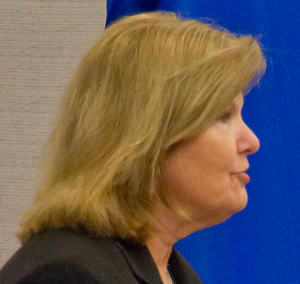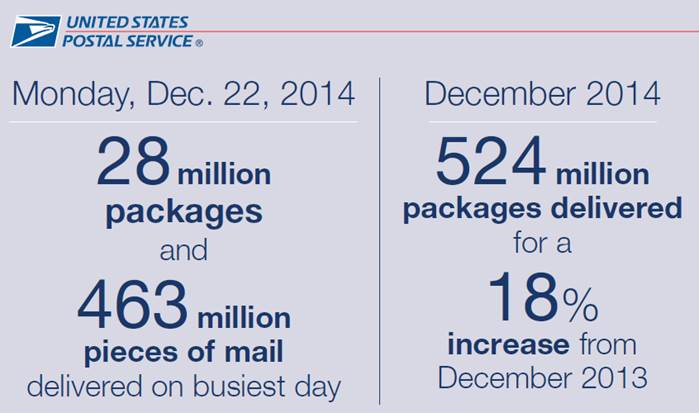An Open Letter to Postmaster General Megan Brennan
From Benjamin Franklin Bailar, Cary R. Brick and John M. Hotchner
February 1, 2015
Dear Postmaster General Brennan:
No reasonable economist can make a convincing argument that the out-of-sight financial crises of the Postal Service can be fixed with 49 cent stamps. Postal Service marketers who believe that are dead wrong. Yet some do.
In our combined three-plus decades of service on the Postmaster General’s Citizens Stamp Advisory Committee, we have seen an increasing emphasis on the part of a few senior Postal Service managers on assigning to the stamp subject and design program a burden it was never meant to bear: making a significant contribution to reducing Postal Service deficits.
Major reductions over time in its Stamp Services Office staffing and operating budgets have contributed to near-term but miniscule long term savings but at the cost of doing things to develop the program, communicate effectively with the public and support the committee as well as it should. Certainly the ideas behind these changes are understandable, but at best they are not well thought out, and at worst, the Law of Unintended Consequences has operated to produce results that we believe negatively impact the program. Over the last five years, increasing pressures for the stamp program to produce both savings and revenue have seriously derailed the program.
First, let’s establish our objective is not to trash the Postal Service. Our criticism is meant to be constructive. If we didn’t care about the Postal Service, we would remain silent. But we feel strongly about the direction a few of its managers at and above the stamp subject selection and design level are pushing the stamp program. They are doing a disservice to the respect enjoyed by an institution that touches every American every day in their own homes and neighborhoods.
The major aim of the stamp issuance program is to recognize and honor the best of America – its people, its culture, its diversity, the panorama of its history, its accomplishments in science and medicine, sports, the arts, its founding principles and societal goals, and to educate, to name just a few. Were it otherwise, the Postal Service could issue a single stamp for each prevailing postage rate.
In fact, there are collateral benefits to issuance of the wide variety of stamps. The popular commemorative stamps have the power to educate our own citizens, represent the United States to peoples abroad, recognize people and causes, and yes, encourage the collecting of US stamps domestically and abroad for the financial benefit of the USPS. Collecting reaps a monetary reward in two ways: cancelling hundreds of thousands of collectible first day covers that do not have to be processed through the mails and through the buying of stamps that are never used.
To our disappointment, the prevailing attitude on the part of some pie-in-the-sky USPS marketers has been and continues to be that this cow is not yielding the amount of milk that it could, and that more needs to be done to maximize profits.
Among the actions we have seen to that end include:
1. An increasing emphasis over time to change the content of stamps from substantive subjects with gravitas to more and more which are assumed to have wider appeal to the buying public. Let us make it very clear we don’t object to including pop culture subjects; we just believe the major aims of the stamp program should not be forgotten.
2. Sometimes repeated use of themes that were popular, and therefore are expected to sell well if used again, rather than broadening the program to honor or recognize a wider range of subjects.
3. Over the last 20 years there has been a huge increase in the number of designs per issue; capped by the controversial 20-design 2013 issue for Harry Potter, and the eight-stamp 2014 Batman issue. It is no wonder that the pop culture issues expected to sell well are also the issues most often picked to have multiple designs. Marketers sometimes hijack the primary role of the advisory committee.
4. When we joined the Stamp Committee, most of the members were substantive subject matter experts in their life’s work. In the last l5 years, increasing numbers of stamp advisory committee appointments have gone to artists and marketers. These people are too often oriented to ‘what will sell?’ As a result, they have created odd multiple designs that often tip toward art that is edgy and even incomprehensible.
5. We have seen increasing numbers of stamps with higher face values – some justified by rate changes that occur far more frequently than happened in the past; but others with no justification whatever except to test the limits of what the market will bear. Take, for instance the $8 Inverted Jenny souvenir sheet and the shameless hawking of these to those who might hope to win a lottery to get one of the 100 un-inverts. Did that lottery capture the excitement of the marketers? Sure. How about the everyday consumers? No. Collectors? No.
All of this reflects the change in the culture of the Postal Service that puts increasing emphasis on defining success of the stamp issuance program in terms of profit realized. This extends from the evaluations of mid-level managers to the ways that Stamp Services is treated in the budgeting process.
The bottom line is that this one element of profitability has become a tail that wags the USPS dog, to the exclusion of or minimizing other important program goals.
Yet the Postal Service continues to say it wants a quality program that appeals to a wide demographic; that they respect and want to cater to stamp collectors, and that it wants to maintain a high-level reputation among the world’s postal administrations.
We believe that how they actually behave says loud and clear what they truly value— revenue expansion and cost cutting.
While this is not a new phenomenon, it has grown exponentially as the USPS has faced continuing deficits due to manufactured financial burdens placed by the Congress and due to decreasing first class mail volume.
This situation is enabled by two dynamics. First, a single year budgeting cycle that discourages investment in marketing and buyer development for monetary gains on the longer term and second, a method of calculating profits that is not simply faulty in concept, but downright deceptive.
Expensive contracted and internal studies of stamp profitability over the years have not been very rigorous, and much of the profit ascribed to the stamp program may be illusory. Smoke and mirrors, if you will.
These are studies that ask respondents if they will retain any of the stamps they have purchased rather than use them as postage. The results are then swallowed whole as representing the level of profit. In fact, they represent the triumph of hope over reality.
What actually happens to stamps bought to be collected? Undeniably many, maybe even a majority, go into collections never to be used as postage. But some are ultimately re-sold to be used as postage when their collectability spirals downward.
Suffice it to say that many collectors and investors buy anything from a single pane to hundreds of panes of new issues hoping that their value will appreciate over time. In many cases, this takes decades to happen, and in most cases it does not happen at all.
The result is that quantities of mint U.S. stamps are often bought and later sold when an owner needs money, or disburses a collection, usually at markedly less than face value, sometimes as low as half the original purchase price. Savvy bargain hunters know discounted postage is easily available through the Internet, at stamp shows and in stamp publication ads. Some of those will be bought to go back into collections, but the majority will be used for mailing, thus cutting deeply into the supposed Postal Service “retention” figures.
The bookkeepers retention figures may be accurate at the single moment they are developed, but they melt away rapidly. To our knowledge there are no current studies assessing the true long-term profits
So marketers get to slap their own backs congratulating themselves on the basis of short term gains. They ignore the fact that a substantial portion of those paper-only profits have a short shelf life. That dynamic simply does not fit the narrative on which they base internal rewards. Nor do the increases reported internally take much account of the fact that increased retention revenue is often based on nothing more than the ever-higher face values of the stamps retained due to rate increases. They are dreamers.
It is fact that a marketer mentality has taken root within the Postal Service demanding that postage stamps must meet unreasonable expectations of profitability. To our dismay those expectations have been institutionalized in such a way that they operate to make it more difficult to attain non-monetary goals that are much harder to quantify.
We believe that many of the Postal Service managers, including the Postmasters General under whom we have served, were and are sincere in wanting a high quality stamp program. The problem is that elements of the Service have in actual practice ignored the bedrock purpose of the program— to honor the people, guiding principles and events that have made this nation great— and replaced it with an institutionalized effort to maximize profits.
Finally, we offer some suggestions:
Reverse the trend of appointing more and more artists and marketers to the Stamp Advisory Committee. Consider revising its makeup. How about a diverse two-thirds membership of subject matter experts from the areas of history, science, sports, international relations, law, government and the fine arts . The emphasis in designs should be on substance rather than edgy art reflecting the ooo’s and ahh’s of the artists and designers themselves. It’s not about them. It’s about the American people.
U.S. collectors have valid concerns. They are important consumers. Hear them out. They’ve been overlooked in too many instances.
Invest in marketing US stamps rather than simply relying on news coverage of their issuance. Promote their availability in the current television campaigns promoting package deliveries.
Improve the distribution of new stamp issues so that when customers ask for specific stamps, local post offices have them in stock. Increase their promotion and availability in the retail marketplace as well.
We respectfully appeal to you as you take up your new duties to grab hold of the rudder and put the stamp subject and design process back on course.
Cordially and with respect,
Benjamin F. Bailar / Cary R. Brick / John M. Hotchner
About the Authors
 Benjamin Franklin Bailar (right; Lake Forest, IL 60045-2254), Postmaster General from 1975-1978, former Dean of the Business School at Rice University, served on the Stamp Advisory Committee from 2007 to 2014. (bbailar@mba1959.hbs.edu)
Benjamin Franklin Bailar (right; Lake Forest, IL 60045-2254), Postmaster General from 1975-1978, former Dean of the Business School at Rice University, served on the Stamp Advisory Committee from 2007 to 2014. (bbailar@mba1959.hbs.edu)
Cary R. Brick (Clayton, NY 13624-0003), retired 31-year U.S. House of Representatives Chief of Staff, President of economic development council, Chair of scholarship foundation, researcher and writer, served on the Committee from 2002-2014. (cbrick@twcny.rr.com)
 John M. Hotchner (left; Falls Church, VA 22041-0125), retired 42-year employee of the U.S. State Department, past president of American Philatelic Society, served on the Committee from 1998 to 2010. (jmhstamp@verizon.net)
John M. Hotchner (left; Falls Church, VA 22041-0125), retired 42-year employee of the U.S. State Department, past president of American Philatelic Society, served on the Committee from 1998 to 2010. (jmhstamp@verizon.net)
 Maybe that mailman who landed his gyrocopter on the U.S. Capitol lawn was ahead of his time!
Maybe that mailman who landed his gyrocopter on the U.S. Capitol lawn was ahead of his time!




 A third federal appeals court has ruled that sculptor Frank Gaylord is entitled to a royalty of more than half a million dollars on the U.S. Postal Service’s use of a photograph of his sculpture on a 2003 stamp.
A third federal appeals court has ruled that sculptor Frank Gaylord is entitled to a royalty of more than half a million dollars on the U.S. Postal Service’s use of a photograph of his sculpture on a 2003 stamp.







